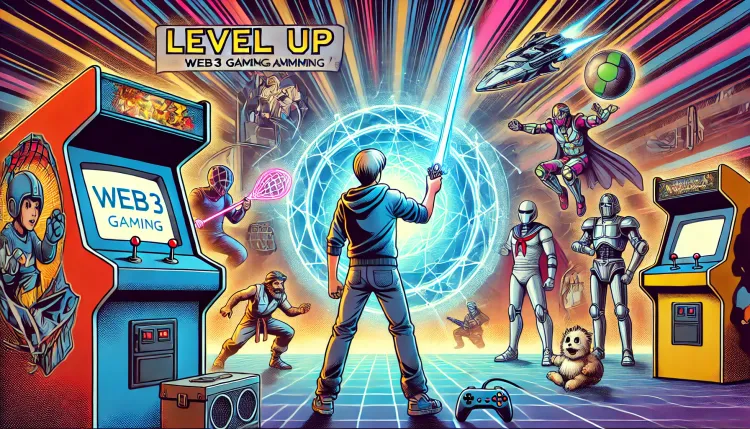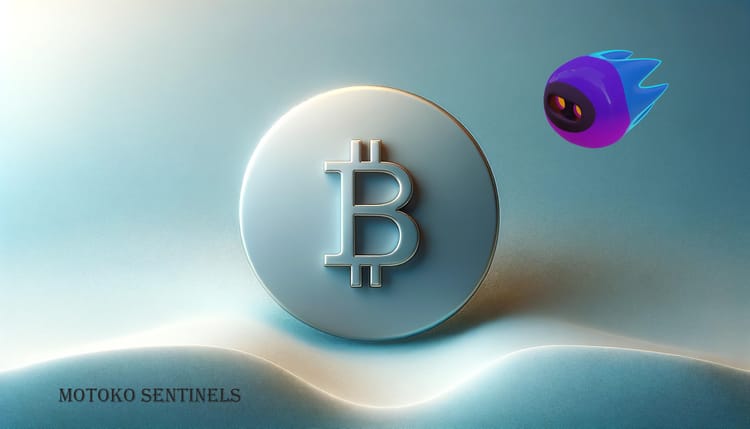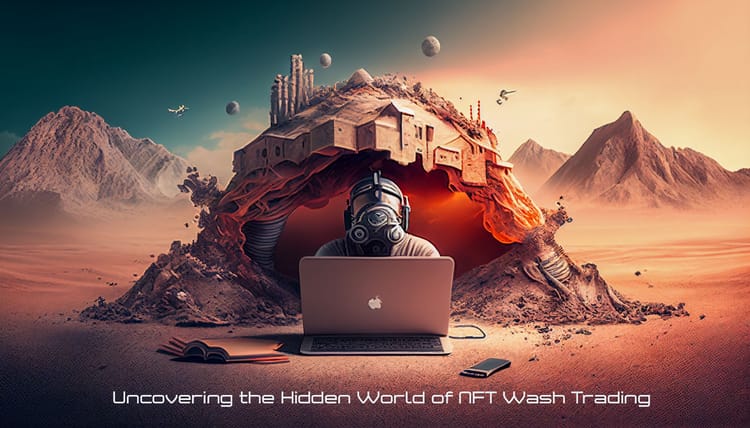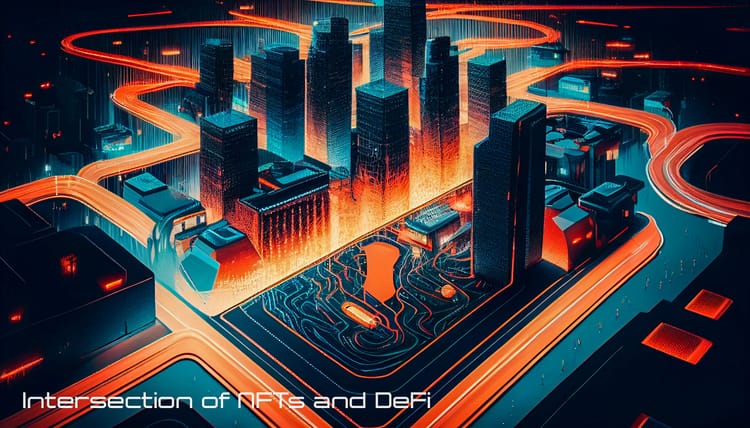NFTs Explained: What Are Non-Fungible Tokens and How Do They Work?

In recent years, Non-Fungible Tokens (NFTs) have gained significant attention in the digital world. These unique digital assets are transforming the way we interact with art, collectibles, and virtual goods. This article provides a comprehensive guide to understanding NFTs, how they work, their use cases, and their potential impact on various industries.
What are Non-Fungible Tokens (NFTs)?
Non-Fungible Tokens (NFTs) are digital tokens that represent ownership of a unique item or asset. Unlike cryptocurrencies like Bitcoin or Ethereum, NFTs are not interchangeable, as each token has its distinct properties, value, and provenance. This difference in fungibility can be better understood through a comparison between fungible and non-fungible tokens:
- Fungible tokens: These tokens are interchangeable and have equal value. For example, one Bitcoin can be exchanged for another without any difference in value.
- Non-fungible tokens: These tokens are unique and cannot be exchanged on a one-to-one basis. Each NFT represents a specific digital or physical asset, and its value depends on its rarity, desirability, and other factors.
Examples of non-fungible assets include digital art, collectible trading cards, virtual real estate, and even in-game items.
How Do NFTs Work?
NFTs are built on blockchain technology, which ensures that each token is unique, secure, and easily verifiable. The most common blockchain for creating and managing NFTs is Ethereum, which uses token standards like ERC-721 and ERC-1155. These standards define the rules for creating, transferring, and managing NFTs.
Token ownership and provenance are essential aspects of NFTs. When an NFT is created or "minted," the creator's digital signature is embedded in the token, which serves as proof of authenticity. This signature, along with the token's transaction history, is recorded on the blockchain, ensuring that the asset's provenance is secure and transparent.
Minting and trading NFTs typically involve the following steps:
- Creating the digital asset: Artists or creators produce a digital item, such as an image, video, or audio file.
- Minting the NFT: The creator uses a platform or a smart contract to turn the digital asset into an NFT, assigning it a unique token ID.
- Listing the NFT for sale: The NFT is listed on a marketplace or auction platform, where potential buyers can bid or purchase the token.
- Transferring ownership: Once a buyer acquires the NFT, the ownership is transferred, and the transaction is recorded on the blockchain.
Popular NFT Use Cases
NFTs have found numerous applications across various domains, including:
- Digital art and collectibles: NFTs allow artists to create, sell, and trade digital art, ensuring that they receive royalties for their work. Collectors can also prove ownership of rare digital assets.
- Virtual real estate: Platforms like Decentraland and The Sandbox enable users to buy, sell, and trade virtual land and properties as NFTs, allowing for unique virtual experiences and investment opportunities.
- Gaming and virtual goods: NFTs can represent in-game items, characters, and other virtual assets, enabling players to own, trade, and monetize their gaming experiences.
- Music and intellectual property rights: Musicians and creators can use NFTs to sell their music, grant exclusive access to content, or even distribute royalties. This approach empowers artists with greater control over their work and revenue streams.
- Tokenizing real-world assets: NFTs can represent physical assets, such as real estate, luxury goods, or artwork. Tokenizing these assets allows for fractional ownership, increased liquidity, and easier trading.
NFT Marketplaces
To buy, sell, or trade NFTs, users typically turn to NFT marketplaces. Some popular NFT marketplaces include:
- OpenSea: As one of the largest NFT marketplaces, OpenSea supports various blockchain networks and offers a wide range of digital assets, including art, collectibles, and virtual goods.
- Rarible: Rarible is a community-driven NFT marketplace that allows users to create, buy, and sell NFTs while also earning platform governance tokens (RARI) through user activity.
- SuperRare: Focused on high-quality, limited-edition digital art, SuperRare is a curated marketplace that connects artists with collectors.
When choosing an NFT marketplace, consider factors such as platform fees, supported blockchain networks, and the type of NFTs available. Also, research each platform's reputation and security measures to protect your digital assets.
Risks and Challenges of NFTs
Despite their potential, NFTs also present several risks and challenges:
- Environmental concerns and energy consumption: Similar to other blockchain-based technologies, NFTs can consume significant energy resources, contributing to environmental concerns. However, efforts are underway to develop more eco-friendly solutions, such as proof-of-stake consensus mechanisms and layer-2 scaling technologies.
- Copyright issues and intellectual property rights: As the NFT market grows, so do concerns regarding copyright infringement and the unauthorized use of intellectual property. Ensuring proper licensing and legal frameworks is crucial for protecting both creators and buyers.
- Scams and fraud in the NFT space: As with any emerging market, the NFT space has seen its share of scams and fraudulent activities. It's essential to research and verify the authenticity of NFTs and their creators before making a purchase.
- Price volatility and market fluctuations: The NFT market is known for its price volatility, with the value of digital assets sometimes experiencing dramatic changes. Potential investors should approach the market with caution and be prepared for unpredictable fluctuations.
The Future of NFTs
The future of NFTs is promising, with potential growth and mainstream adoption on the horizon. As more use cases emerge and innovations continue to develop, NFTs may become an integral part of various industries, from entertainment and gaming to real estate and finance.
Some potential future developments include:
- Integration with virtual and augmented reality experiences, enhancing the value of virtual goods and experiences.
- Further tokenization of real-world assets, enabling greater access and liquidity for a wide range of investors.
- The development of new blockchain networks and technologies that address environmental concerns and improve the efficiency of NFT transactions.
Conclusion
Non-Fungible Tokens (NFTs) have emerged as a groundbreaking innovation that transcends the boundaries between the digital and physical worlds. As we've explored in this comprehensive guide, NFTs have the potential to revolutionize various industries, from art and gaming to real estate and finance, offering exciting opportunities for creators, collectors, and investors.
As NFTs continue to gain momentum, it's crucial to acknowledge both the potential and the challenges they present. By understanding the unique characteristics, workings, and risks associated with NFTs, we can navigate this emerging market with confidence and make informed decisions.
The future of NFTs is undeniably bright, with endless possibilities for growth, mainstream adoption, and technological advancements. As we witness the integration of NFTs with cutting-edge technologies like virtual and augmented reality, as well as the tokenization of real-world assets, we stand at the cusp of a new era in digital asset management and ownership.
Please share your thoughts on the article by clicking below Emoji ...
Disclosure
*The information provided on this cryptocurrency blog is for educational and informational purposes only and should not be construed as financial, investment, or trading advice. The authors, contributors, and administrators of this blog are not licensed financial professionals and do not hold any formal qualifications in the fields of finance, economics, or cryptocurrencies.
The content on this blog is based on the authors' personal opinions, experiences, and research, and should not be considered as professional financial guidance. While we strive to provide accurate, up-to-date, and reliable information, we cannot guarantee the accuracy or completeness of the information presented. Cryptocurrency markets are highly volatile, and investments in cryptocurrencies and related assets carry a substantial risk of loss.
Before making any financial decisions or investments, you should consult with a qualified financial advisor or perform your own research and analysis. Any actions taken based on the information provided on this blog are at your own risk, and the authors, contributors, and administrators of this blog cannot be held liable for any losses or damages resulting from the use of the information found herein.
By using this blog, you acknowledge that you have read and understood this disclosure and agree to assume full responsibility for any decisions or actions you take based on the information provided.*







